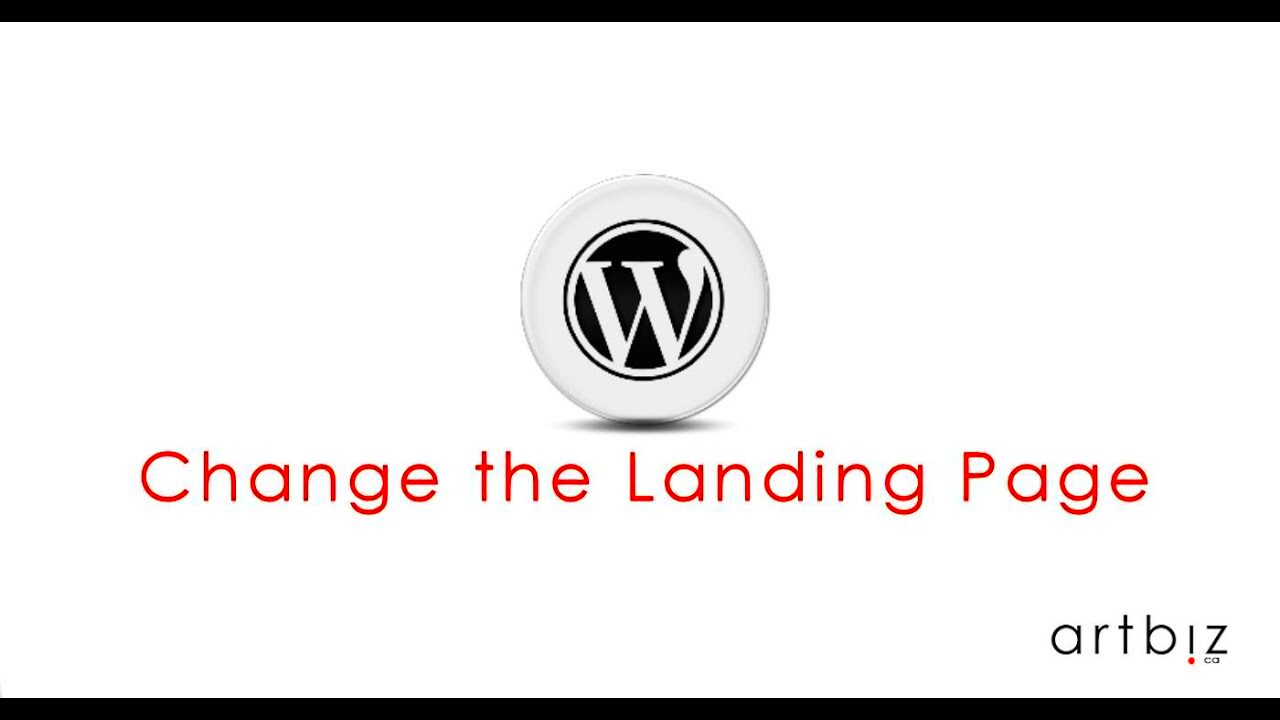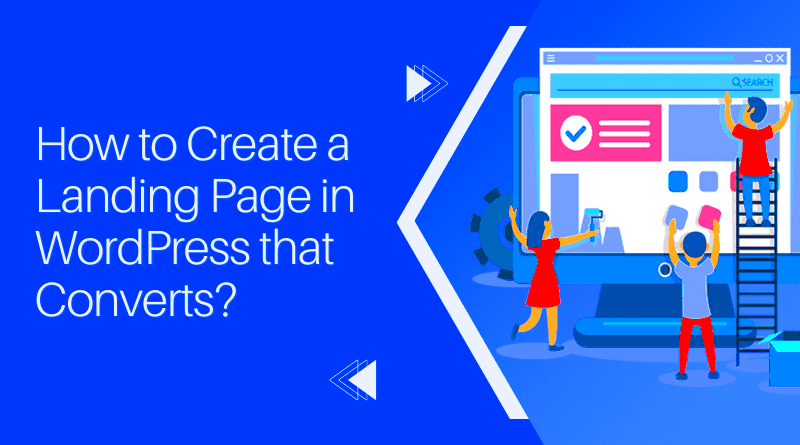When we talk about landing pages in WordPress, we’re referring to specific pages designed with a single focus or goal, often to capture leads or drive conversions. Unlike typical web pages filled with various information, a landing page is typically minimalistic, emphasizing a call to action (CTA). These pages can be tailored for specific marketing campaigns, products, or services.
Here are some key features of landing pages in WordPress:
- Simplicity: Landing pages are stripped of distractions that can divert user attention from the main objective.
- Targeted Content: The content on a landing page is crafted to speak directly to the needs and desires of a specific audience.
- Compelling Call to Action: A strong, clear CTA urges visitors to take the desired action, such as signing up for a newsletter or making a purchase.
- Custom Design: WordPress allows you to create visually appealing landing pages with various themes and plugins, ensuring they align with your brand’s aesthetics.
Overall, landing pages in WordPress can be a powerful tool in your online marketing arsenal, helping you funnel traffic directly to essential actions you want your visitors to take.
Why Use a Landing Page?

Using a landing page offers several strategic advantages that can help optimize your online marketing efforts. Let’s delve into some of the most compelling reasons why you should consider implementing a landing page on your WordPress site.
| Reason | Description |
|---|---|
| Increased Conversion Rates | Since landing pages are focused on a single goal, they usually result in higher conversion rates compared to standard web pages. |
| Improved Targeting | Landing pages allow for better targeting of specific demographics, allowing you to tailor your messaging for different audiences. |
| Analytics Tracking | You can easily track the performance of landing pages through various analytics tools, letting you fine-tune your strategies based on real data. |
| Cost-Effective Marketing | Landing pages often demand lower investment and can generate significant return on investment through focused campaigns. |
| Enhanced Branding | A well-designed landing page reinforces your brand’s message and style, making it easier for visitors to remember you. |
In summary, landing pages are not just a trend; they are a smart strategy for enhancing user engagement and maximizing conversion opportunities. By creating focused landing pages on your WordPress site, you can significantly boost your marketing efforts.
Steps to Change a Page to a Landing Page
Transforming a standard page into a landing page in WordPress is a fantastic way to boost conversions, whether it’s for collecting leads, promoting a product, or inviting visitors to sign up for a newsletter. Here’s how to do it step by step:
- Select Your Page: Start by identifying the page you want to transform into a landing page. This could be an existing page or a new one. Navigate to your WordPress dashboard, go to “Pages,” and either select a page to edit or create a new one.
- Choose a Landing Page Plugin: There are several landing page plugins available, such as Elementor, Thrive Architect, and Beaver Builder. Choose one that suits your needs and install it from the plugins directory.
- Set Up Your Landing Page: After installing your plugin, you will typically find a new option in your page editor (such as “Edit with Elementor”). Click this to launch the drag-and-drop editor. Use the templates available or create your own layout using sections, columns, and widgets.
- Customize Content: Focus on your content—your headline, sub-headline, key benefits, and call to action (CTA). Use bold text for emphasis and consider adding engaging images or videos to capture attention.
- Optimize for Mobile: Make sure your landing page looks great on mobile devices. Most landing page builders have a mobile preview option. Adjust the layout as necessary, ensuring buttons and CTAs are easily clickable.
- Publish and Test: Once you’re satisfied with your landing page, hit publish. Be sure to test it by clicking through your CTA and filling out forms to ensure everything functions smoothly.
And just like that, your page is now a dedicated landing page ready to convert visitors!
Choosing the Right Page Template
When it comes to creating an effective landing page in WordPress, selecting the right page template is crucial. The template sets the tone and functionality of your page. But how do you choose? Let’s break it down:
- Understand Your Goals: What do you want to achieve with your landing page? Whether it’s lead generation, product sales, or event registrations, your goals will influence your template choice.
- Template Options: WordPress offers several templates. Basic templates usually include sidebars and other distractions; however, for landing pages, look for “full-width” or “blank” templates. These allow for an uninterrupted flow of information.
- Check Customization Options: Not all templates are created equally. Ensure the template you choose allows for a good degree of customization. You want to adjust colors, fonts, and layout to align with your branding.
- Responsive Design: In our mobile-first world, selecting a template that’s mobile-friendly is a must. Use templates that automatically adapt to different screen sizes to improve user experience.
- User Reviews and Ratings: Before committing to a template, take some time to check reviews. A template that has been well-received by other users can save you time and frustration down the line.
By thoughtfully selecting the right page template, you’ll set a solid foundation for your landing page, enhancing functionality and maximizing engagement.
Customizing Your Landing Page Content
Customizing your landing page content is a crucial step in achieving your goals, be it gathering leads, promoting a product, or generating awareness about your brand. Remember, this isn’t just a typical webpage—it’s your opportunity to capture attention and drive action from your visitors.
To start, consider the main objective of your landing page. What action do you want your visitors to take? Defining a clear goal will guide your content decisions. Here are some key elements to consider for effective customization:
- Headline: Craft a catchy and clear headline that delivers the essence of your message. The headline should immediately communicate what your landing page is about.
- Subheadline: This should complement your main headline, providing a bit more detail or enticing explanation that encourages users to read on.
- Body Content: Keep it concise and focused. Highlight the benefits of what you’re offering, and don’t be afraid to get personal or relatable. Using bullet points can help in breaking down complex information.
- Visuals: Incorporate high-quality images or videos that resonate with your message. A picture is worth a thousand words, and compelling visuals can strengthen your narrative.
- Testimonials: Leverage social proof by showcasing positive feedback from previous customers. This adds credibility and can help reduce hesitation.
Don’t forget to optimize your content for readability. Use short paragraphs, clear fonts, and sufficient white space to make your landing page inviting. By carefully customizing your landing page content, you’re not just informing your visitors; you’re engaging them and, ultimately, driving them toward action.
Incorporating Call-to-Actions (CTAs)
When it comes to landing pages, incorporating effective call-to-actions (CTAs) is paramount. After all, a landing page’s main purpose is to persuade visitors to take a specific action. A well-placed and compelling CTA can significantly increase your conversion rates.
Here are some tips for creating effective CTAs:
- Be Clear and Direct: Your CTA should clearly state what you want the visitor to do. For instance, instead of a generic “Submit,” use “Get Your Free eBook Now!”
- Create Urgency: Words like “Limited Time Offer” or “Act Now” can spur visitors into action. If they feel they might miss out, they’re more likely to act.
- Use Action-Oriented Language: Use strong verbs that encourage action. Phrases like “Download,” “Join,” and “Subscribe” can inspire users to take that next step.
- Highlight Benefits: Make sure your CTAs emphasize what the user stands to gain. For example, “Join our Newsletter for Exclusive Tips!” indicates they’re going to receive something valuable.
- Design Matters: Your CTA button should stand out on the page but still blend with your overall design. Use contrasting colors, ample spacing, and size to draw attention.
As a best practice, don’t overload your landing page with multiple CTAs. Focus on one or two key actions you want users to take. By strategically incorporating compelling call-to-actions, you create a sense of direction for your visitors, guiding them seamlessly toward the outcome you desire. Remember, a great CTA can be the difference between a visitor surfing away and a conversion!
7. Optimizing for SEO
When you create a landing page in WordPress, it’s super important to optimize it for search engines. This means you want to make sure that your page is not only appealing to visitors but also to search engine bots. A well-optimized landing page can help improve your visibility and drive more traffic. Here are some key strategies to consider:
- Keyword Research: Identify relevant keywords that your target audience is searching for. Use tools like Google Keyword Planner or Ubersuggest to find terms with good search volume and lower competition.
- Meta Tags: Ensure that your landing page has a compelling title tag and meta description. These should include your target keywords and offer a clear summary of what visitors can expect on your page.
- Header Structure: Use H1 for your main title and H2/H3 for subheadings. This not only organizes your content but helps search engines understand its hierarchy.
- Image Optimization: Use high-quality images and ensure that they have descriptive alt tags. This aids accessibility and provides search engines with context about the visuals on your page.
- Internal and External Links: Linking to other relevant pages on your site can enhance the user experience and improve SEO. Also, linking to credible external sites can lend authority to your content.
- Mobile Optimization: Ensure that your landing page is mobile-friendly. A significant amount of traffic comes from mobile devices, and search engines prioritize mobile-responsive sites.
By implementing these SEO best practices, you can significantly enhance your landing page’s effectiveness in reaching a wider audience and converting visitors into leads or sales.
8. Testing and Analyzing Landing Page Performance
Once your landing page is live, the real work begins! Testing and analyzing its performance is crucial to understand how well it’s doing and where you can make improvements. Here’s how to get started:
- A/B Testing: Create variations of your landing page to see which versions perform better. You can tweak elements like headlines, images, and calls to action (CTAs) to find out what resonates most with your audience.
- Use Analytics Tools: Implement tools like Google Analytics to monitor traffic sources, bounce rates, and user behavior. Pay attention to key metrics such as:
| Metric | What it Indicates |
|---|---|
| Conversion Rate | Percentage of visitors taking the desired action (e.g., signing up, purchasing) |
| Bounce Rate | Percentage of visitors who leave without interacting with the page |
| Average Session Duration | How long users are staying on your page, indicating engagement |
- User Feedback: Don’t hesitate to ask users for their opinions! Surveys and feedback forms can provide valuable insights directly from your audience.
- Heatmaps: Tools like Hotjar or Crazy Egg allow you to see where users are clicking most. This can help you understand if your CTAs are positioned effectively.
- Continuous Improvement: Landing page optimization is an ongoing process. Regularly analyze performance data and stay updated on best practices to ensure your page remains effective.
Testing and analyzing your landing page isn’t just a one-and-done task; it’s an ongoing journey to refine your strategies, boost conversions, and ultimately achieve your marketing goals!
Conclusion: Best Practices for Effective Landing Pages
Creating an effective landing page in WordPress requires an understanding of not just aesthetics but also functionality. Here are some best practices to keep in mind:
- Clear and Compelling Headline: Start with a strong headline that captures your visitor’s attention and conveys the main benefit of your offer.
- Minimalist Design: Use a clean, uncluttered layout that directs focus to your conversion goal, whether it’s signing up for a newsletter or making a purchase.
- High-Quality Images: Incorporate visually appealing images or videos that resonate with your audience and illustrate your message.
- Strong Call-to-Action (CTA): Use persuasive language in your CTAs, making them stand out through color and placement to drive action.
- Responsive Design: Ensure your landing page is mobile-friendly, as a significant portion of users access websites via mobile devices.
- Testimonials and Social Proof: Include reviews, testimonials, or trust badges to build credibility and reassure visitors about your offer.
- A/B Testing: Regularly test different elements of your landing page—including headlines, CTAs, and images—to optimize your conversion rates.
Incorporating these best practices will help you create a landing page that not only captures attention but also converts visitors into customers. Consistently reviewing and refining your strategies will ensure you keep up with changing trends and user expectations.



